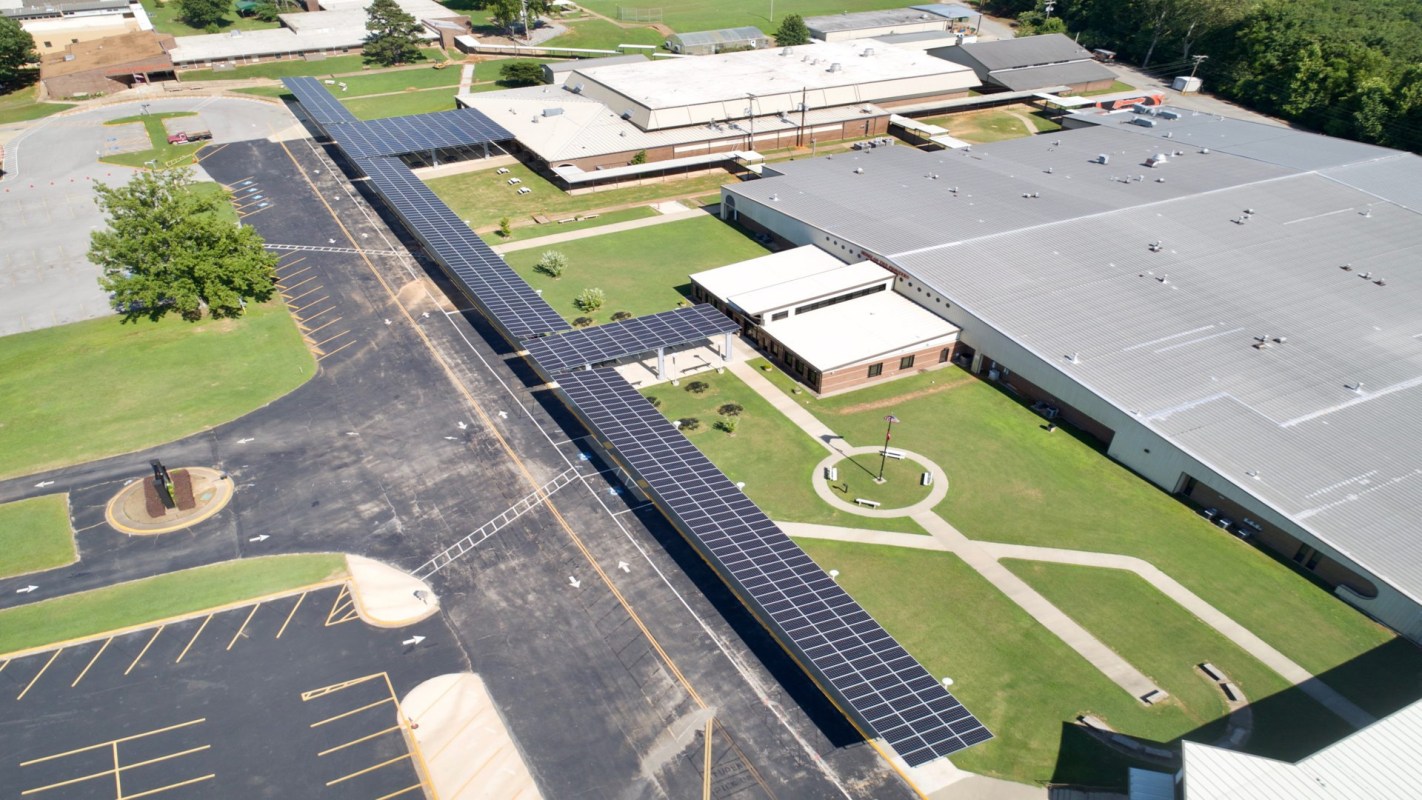Solar-powered schools are turning out to be a really bright idea! Schools all over the United States are tapping into solar energy to save their budgets, pay teachers more, and protect our planet.
Take for example the Batesville School District in Arkansas. Megan Renihan, the district's communications coordinator, told Yale Climate Connections that the district was able to increase pay and staff retention through sustainability efforts like solar power.
Batesville spent around $500,000 a year on utilities back in 2017. But after replacing inefficient lights with LEDs, fitting new windows and HVAC systems, improving insulation, and installing close to 1,500 solar panels, the district is saving more than $300,000 a year by 2020.

More than half of Batesville School District's electricity is now generated by solar panels. The district rose from nearly last in the county for teacher pay to first, which provided teachers more financial security and reduced staff turnover, CBS reported.
The Brighter Future Report 2020 illuminates the spread of solar power in schools. The number of K-12 schools using solar energy increased by 81% between 2014 and 2020. At the start of the decade, 7,332 schools in the U.S. used solar energy, serving more than 5 million students and accounting for more than 5% of all grade schools.
"We know from research, solar is contagious, the best indicator if someone goes solar is if their neighbor has solar," Tish Tablan, an author of the report and director of clean energy nonprofit Generation180, told Environmental Health News.

Schools choosing to adopt solar energy can have wider impacts throughout the community. And students are among those who have been pushing for clean energy implementation.
In Portland, Maine, students from three high schools formed an organization called SolaRISE to push for solar power adoption by schools throughout the city. The group raised more than $20,000 towards its goal, and the Portland Public Schools board credited its work in the decision to introduce a major solar project in 2019.
The offsite solar project will be able to cover 60% of the district's energy demands and could lead to $50,000 a year in savings. In its resolution, the board also acknowledged the danger that the coastal city faces in a present and future shaped by climate change and extreme weather events.

"Portland is highly vulnerable to the impacts of climate change … (which will have) cascading effects on Portland's economy, infrastructure, public health and safety, and the well-being of our students," it said.
TCD Picks » Upway Spotlight

If you would like to introduce solar power to your school system, there is plenty of support and information available, along with several successful student groups to learn from. Duke Energy recommends finding potential locations for solar systems near or on your school, learning about the financing and regulatory requirements in your area, and building community engagement among staff, parents, students, and the neighborhood for the project.
Join our free newsletter for weekly updates on the coolest innovations improving our lives and saving our planet.












!["It really is worth getting somebody … [who] build(s) that 20 years of service into their pricing."](https://www.thecooldown.com/wp-content/uploads/2025/02/SolarReviews-1.jpg?w=350)
